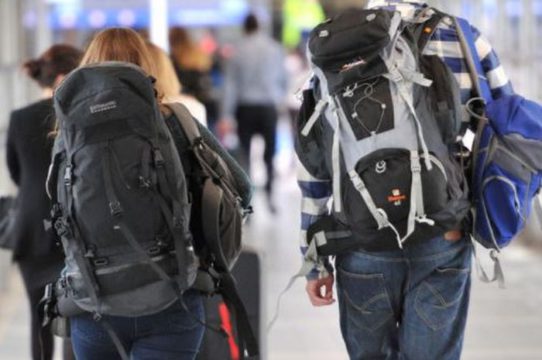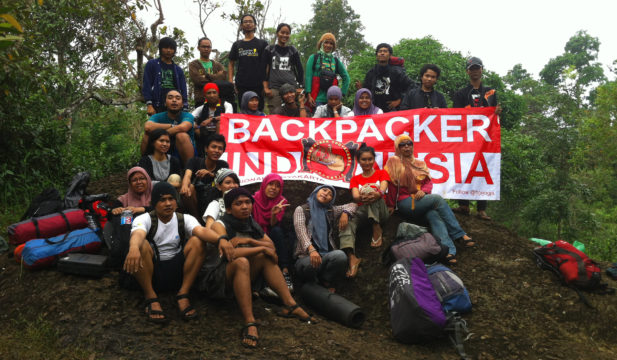Quoted by many mainstream national media, including Kompas.com, the Minister of Maritime Affairs and Investment Luhut Binsar Pandjaitan, who also serves as the National COVID-19 Czar, said that in the future, Indonesian tourism wants to focus on quality foreign tourists and ban international “backpackers.”
Follow-up reporting to Minister Luhut’s comments states that Indonesian Immigration officials would soon screen foreign nationals applying for tourist visas, screening out those determined to be “low quality” backpackers. Luhut continued: “We will filter arriving tourists. We don’t want backpackers coming to a clean Bali. We want (only) quality visitors.”

With due respect to Minister Luhut, who is doing a masterful job in combatting COVID-19, there’s abundant authoritative evidence that his reasoning may be flawed when it comes to the youth and backpacker tourism sectors.
The United Nation’s World Trade Organization (WTO) has done extensive research on the potential economic and strategic value of backpackers and their fellow travelers classed as “the youth market” – those comprised of “generation y” (millennials, born between 1980 and 2000) and “generation z” (born after 2000).
Moreover, a solid case can be made that the “youth market,” given its size and market potential, is the market segment best suited to help Indonesia develop its national tourism goals, especially the desire to encourage tourism development in remote, underdeveloped areas, such as the much-touted “10 New Bali’s.”
In examining the youth market and its significant backpacker component, we hope Minister Luhut and the Minister of Tourism and the Creative Economy, Sandiaga Uno, will consider some of the following:
- The United Nations has recognized the youth market as a major force for development and positive social change, having the potential to drive sustainable development in the tourism sector.
- The United Nations World Tourism Organization (UNWTO) projects that by the year 2020, youth numbering 370 million travelers will spend US$400 billion on travel.
- The youth market is considered the fastest growing market segment in travel, with youth travel representing 23% of the one billion international holiday pre-COVID trips taken annually.
- The youth and backpacker market is often incorrectly perceived as low-spending. Research carried out by the World Youth, Student and Education Confederation (WYSE) shows a market segment spending more than US$1,000 a week, staying for extended periods, and spending 60% or more of their total travel budget at their chosen destination with local suppliers from the surrounding community.
- WYSE estimates that the youth market spends an average of US$2,160 on their main trip each year.
- In Australia, which is traditionally a key source market for Indonesian tourism, the youth market has been tracked, showing that 58% of this travel segment return to a destination within five years.
- The “youth market” has a particular affinity for gadget-based technology for booking accommodation, for finding restaurants and attractions, mapping their travels, and keeping in touch with family, friends, and fellow travelers. Governments will need to maximize Internet connectivity to attract this youthful sub-sector of nomadic travelers and encourage extended length-of-stays.
- Because of the youth market’s affinity for the Internet and social network marketing, they provide an incomparable and valuable instantaneous marketing boost to any destinations they visit when they share their travel experience and destination information via applications that include, but are not limited to: Facebook, Instagram, WhatsApp, Skype, Zoom, Twitter, Google, YouTube, QC, WeChat, QZone, Tumblr, Baidu Tieba (PRC), Snapchat, Viber, Sina Weibo (PRC), Pinterest, Xanga, Wayn, Renren, Foursquare, VKontakte, Line, QQ, and Tiktok.
- Research shows that the “youth travel market” is frequently “purpose driven” seeking to learn a new skill, study a language, undertake some educational experience, or volunteer to work on community development projects in their chosen destination during their travels.
- Countries that allow the youth market legal short-term employment opportunities have been shown to enjoy even more success in attracting these travelers.
- WYSE research demonstrates that the “youth market” is both resilient and adventurous, making it particularly appropriate to “new” travel destinations, such as remote regions of Indonesia, where service and infrastructure development levels may be lacking.
- Worthy of special note in this pandemic era, the youth market is among the first to return to conflict areas, regions that have suffered natural disasters, and post-plaque locales.
- The foreign and domestic “youth market” traveling off-the-beaten-track tends to be less demanding and more accepting when accommodation and transportation facilities are less than luxurious, and the local infrastructure is sometimes lacking.
- The “youth market” also plays a vital role as the pioneering vanguards of travel, preparing the way for other higher-spending visitors to come. Studies show that backpackers revisit the travel memories of their youth years later with families and relatives in tow.
- Past “youth market” documented visitor numbers and the prosperity they created for local small and medium-sized businesses form key parts of feasibility studies submitted to financial institutions to build modern hotels and restaurants to replace the homestays and warungs of the past.
- Millennials and backpackers are especially attracted to “off-the-beaten-track” and new international destinations. Seeking “genuine travel experiences,” backpackers in their 20s and 30s traveling in Indonesia and other parts of Southeast Asia are often from the upper economic classes, with a large number working as professionals in their home countries.
- In the Indonesian experience, “backpackers” of an earlier generation were the trailblazers who pioneered destinations such as Bali, Yogyakarta, North Sumatra, Lombok, and Komodo in the 1970s and 1980s.

Pak Luhut and Pak Sandiaga – the leaders plotting the course of future tourism in Indonesia will hopefully not fail to notice that the Indonesian members of “Generation X” and “Generation Y” have markedly different travel tastes from their parents. Young Indonesians are now among the world’s most gadget-savvy, eager to learn, share, and influence social media. Very much unlike their parents, many young Indonesian are also “backpackers” who grab their wallets, ATM cards, shorts, and a backpack to explore the endless wonders and cultural diversity of Tanah Airku Indonesia.
We hope that with his stated disdain for backpackers, Minister Luhut will not someday discover he has thrown out the baby with the bathwater.

